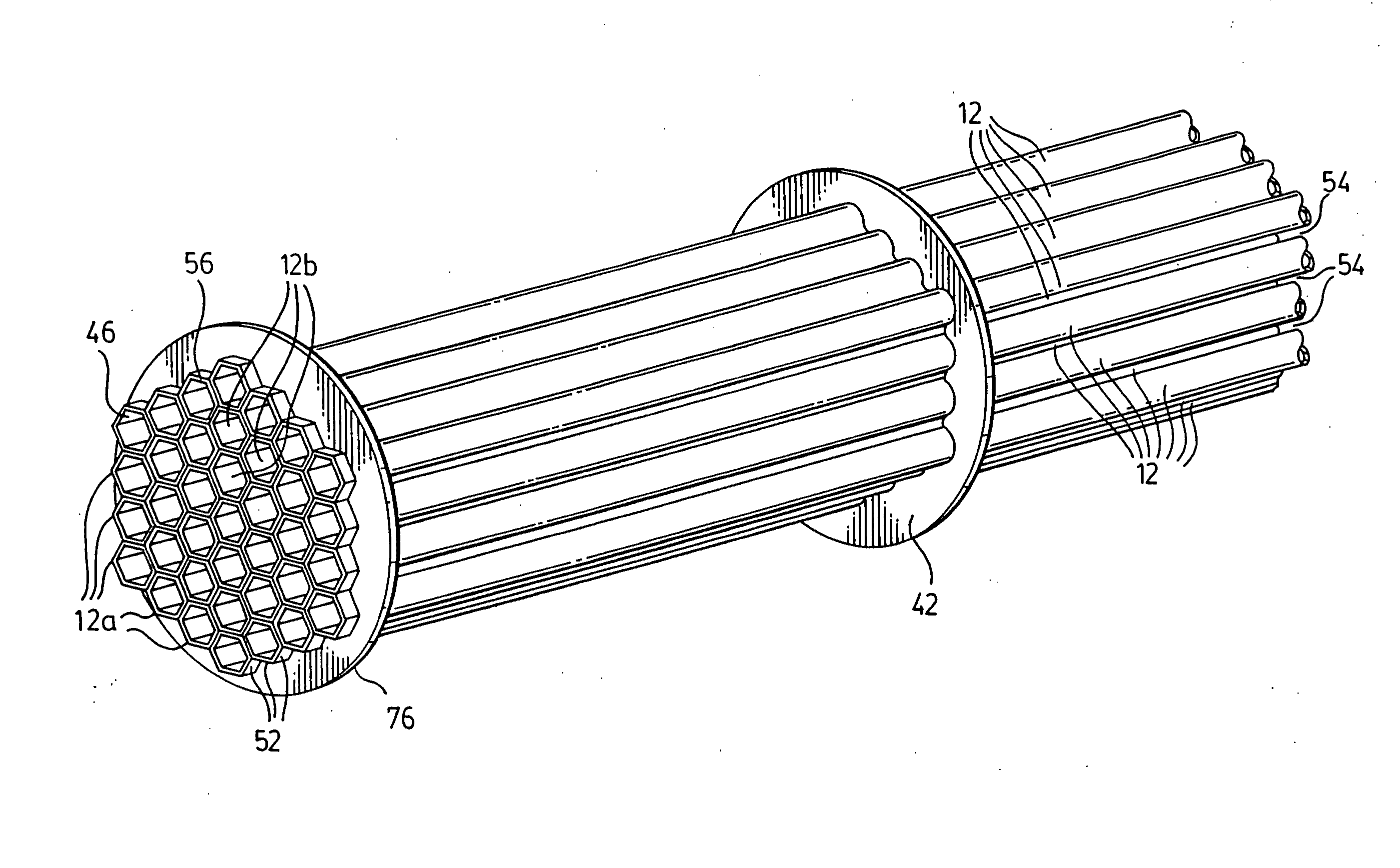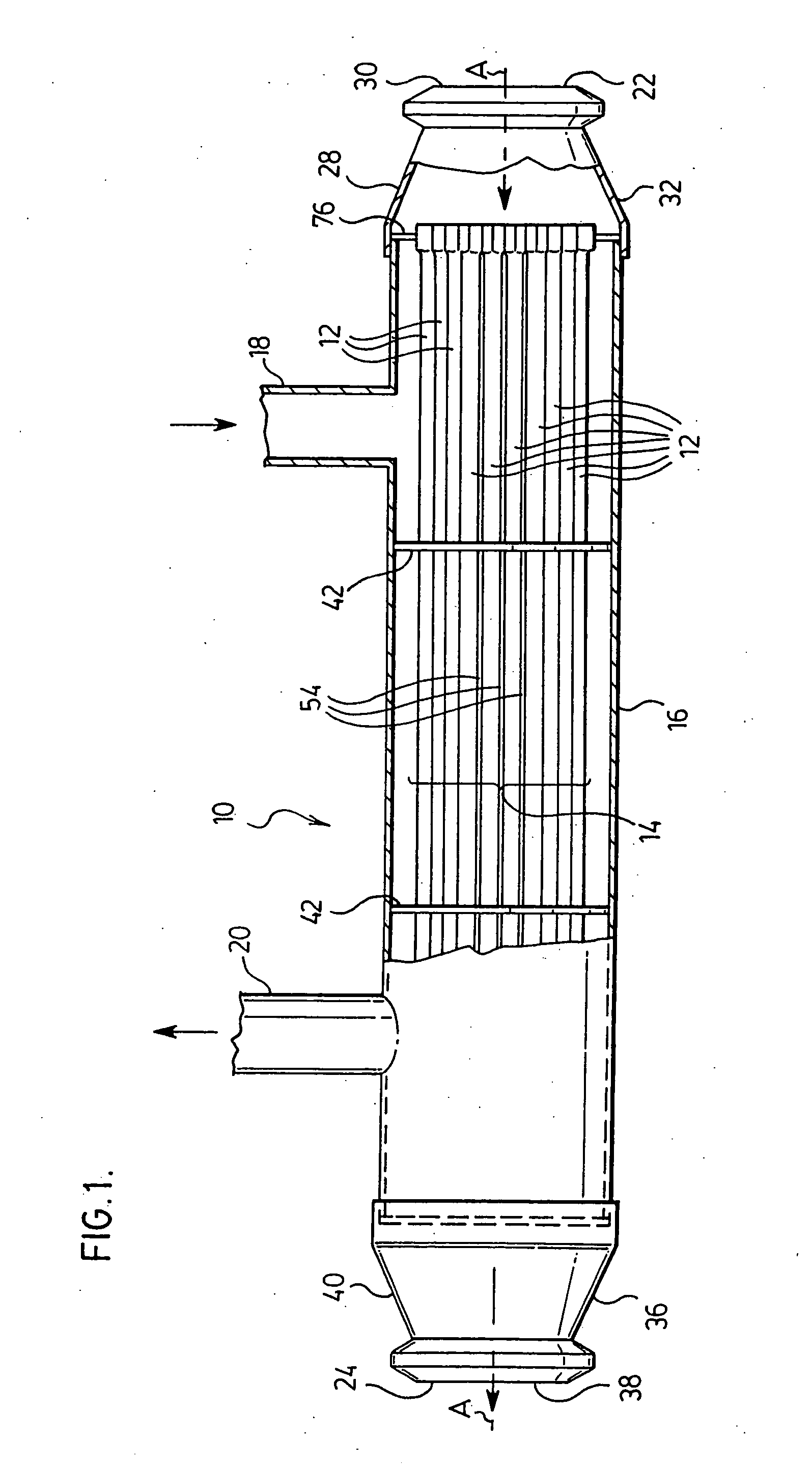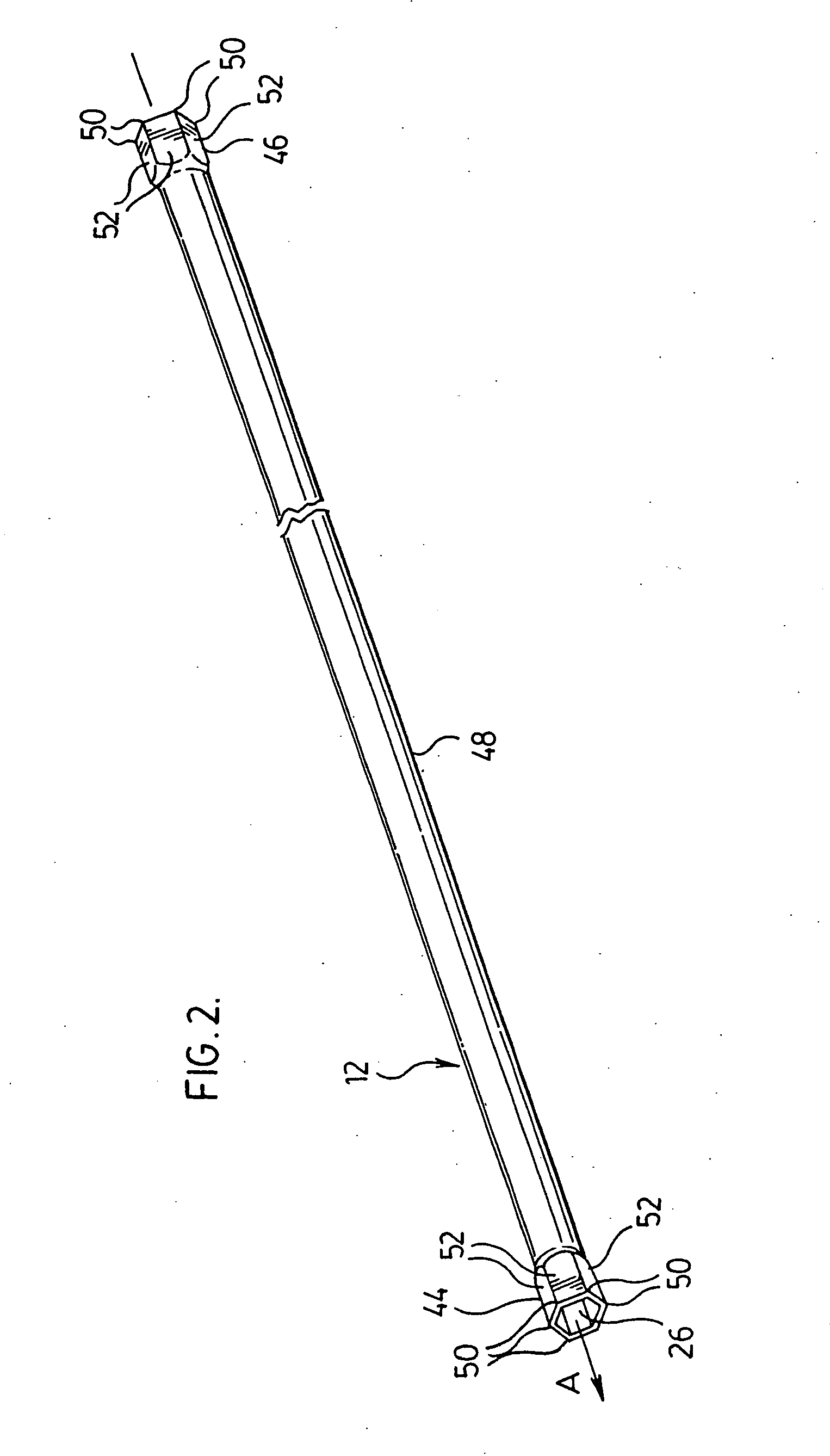Tube bundle heat exchanger comprising tubes with expanded sections
a heat exchanger and tube bundle technology, applied in indirect heat exchangers, machines/engines, lighting and heating apparatus, etc., can solve the problems of prone to stress-induced failure, reduce the service life of the heat exchanger, so as to reduce the material cost and the effect of enlarged cross-sectional area
- Summary
- Abstract
- Description
- Claims
- Application Information
AI Technical Summary
Benefits of technology
Problems solved by technology
Method used
Image
Examples
Embodiment Construction
[0039]FIG. 1 illustrates a preferred heat exchanger 10 according to a first preferred embodiment of the invention. Heat exchanger 10 is particularly suited for use as a high temperature heat exchanger of the type where stress-induced failure of header plate joints would be of concern. For example, heat exchanger 10 can be used as an EGR cooler. It will also be appreciated that heat exchanger 10 may be adapted for use in a number of other automotive or non-automotive applications, including application to fuel cell fuel processors and fuel reformers.
[0040] The heat exchanger 10 comprises a plurality of tubes 12 extending parallel to one another and defining a tube axis A. The tubes are arranged in the form of a tube bundle 14 which is more particularly described below with reference to FIGS. 3A and 3B. The tube bundle 14 is enclosed along, its sides by an axially extending outer shell or housing 16. The housing 16 is provided with a first inlet port 18 and a first outlet port 20 to ...
PUM
 Login to View More
Login to View More Abstract
Description
Claims
Application Information
 Login to View More
Login to View More - R&D
- Intellectual Property
- Life Sciences
- Materials
- Tech Scout
- Unparalleled Data Quality
- Higher Quality Content
- 60% Fewer Hallucinations
Browse by: Latest US Patents, China's latest patents, Technical Efficacy Thesaurus, Application Domain, Technology Topic, Popular Technical Reports.
© 2025 PatSnap. All rights reserved.Legal|Privacy policy|Modern Slavery Act Transparency Statement|Sitemap|About US| Contact US: help@patsnap.com



